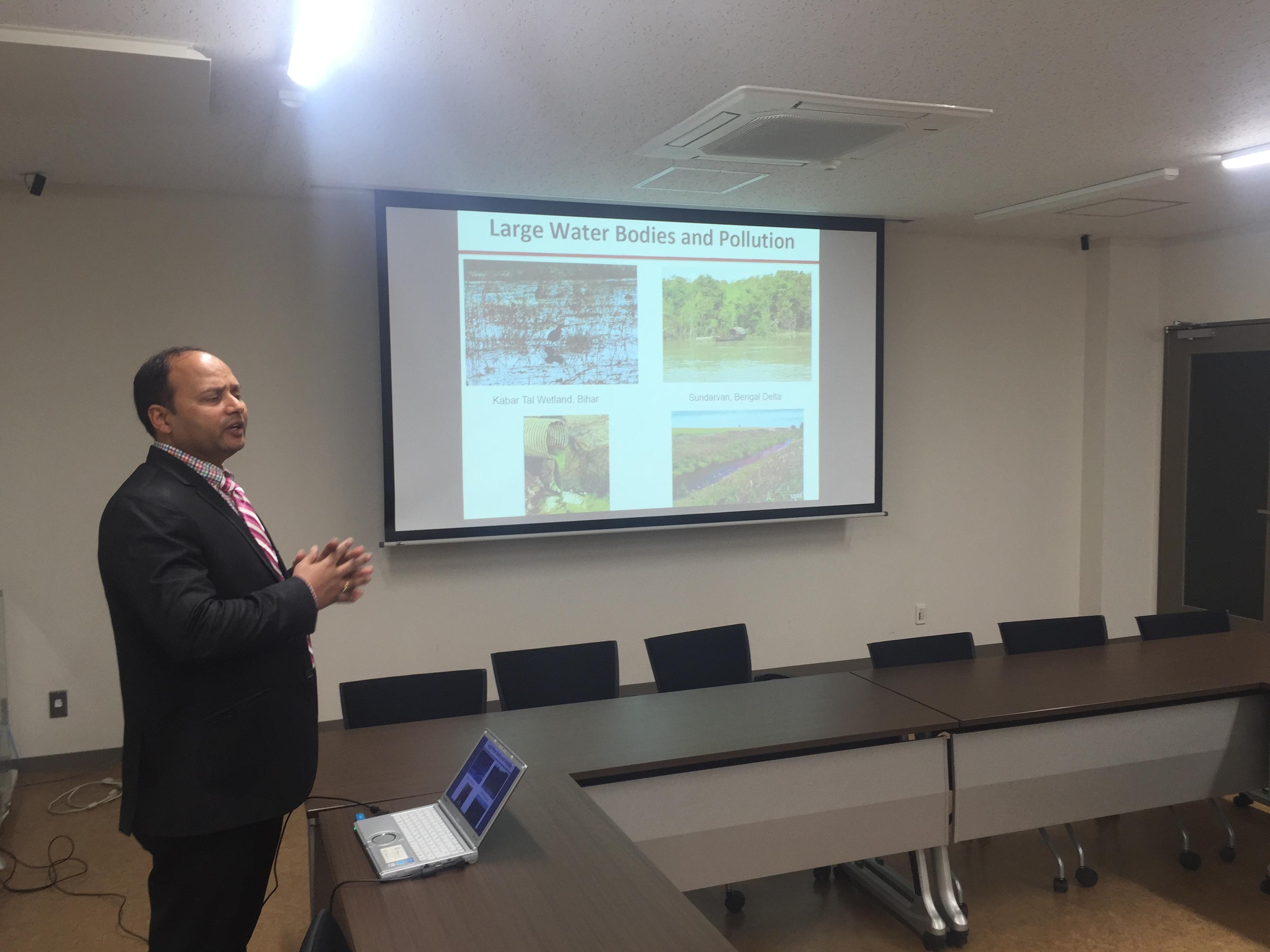Lecture by Dr. Prabhakar Sharma, School of Ecology and Environment, Nalanda University
Dr. Prabhakar Sharma, Assistant Professor, School of Ecology and Environment Studies, Nalanda University, Nalanda, Bihar, India delivered a lecture on " Pollutant Fate and Transport of the Subsurface Systems" at the Room S-207D, DPRI Main Building, Uji Campus, Kyoto University, Japan on 27 February 2018 from 16:30 to 17:30 hours.
Dr. Prabhakar Sharma is an Assistant Professor at the School of Ecology and Environment Studies, Nalanda University. At Nalanda University, Dr. Sharma is involved in local and regional scale surface and subsurface hydrological research using field, lab, and modeling techniques to perform the research related to fate and transport of nano- and micro size contaminants in soil and groundwater. Earlier, he had served at the Department of Earth Sciences, Uppsala University in Sweden; he also worked at University of Western Ontario in Canada and Ålbog University in Denmark as a full time researcher. He had completed his PhD from Washington State University, USA and master's from Stuttgart University, Germany and also from Indian Institute of Technology, Kharagpur, India. Dr. Sharma had published more than two dozens of peer-reviewed journal articles and supervised a PhD student and a number of master's students in addition to teaching a number of related courses at Uppsala and Nalanda University.
Abstract :
Abstract: Different anthropogenic activities near the large water bodies can lead to a heavy load of pollutant on the wetland and ultimately to the subsurface systems. In order to understand the fate of these pollutants (such as agrochemicals, heavy metals, and other micro-size pollutants) and their impact on groundwater bodies, it is important to understand their transport and mobilization mechanism in the subsurface system. In addition, several Engineered Nano Particles (ENPs) are also being used in numerous consumer products worldwide, including sunscreens, pharmaceuticals, cleaning products, food packaging, and clothing industries as this size range of ENPs gives enhanced catalytic, physical strength, conductiveness, and optical properties compared to their micro- or macro-scale counterparts, which may also end up to the large water bodies or subsurface systems. Various ENP release pathways into aquatic and terrestrial environments are expected, including point sources (e.g., production facilities, landfills, wastewater treatment plant effluents) and nonpoint sources (e.g., wear of material containing ENPs, application of bio-solids to land). Given the large proportion of ENPs that will end up in soils, an understanding of the impact of ENPs on soil organisms, as well as the transport of ENPs in partially- and fully-water saturated soil systems, is required for informed risk assessments and policy discussions. The impact of ENP on these environments is poorly understood. With the increasing use and subsequent disposal of nanoparticles, greater environmental concerns are expected in the coming days. In this presentation, understanding of the fate and transport of engineered nanoparticles (ENPs) released from selected commercial products in the Indian or similar environment (e.g., soil, wetlands, and aquifers) will be discussed. This phase of the research will provide new insights into the mobility of ENPs released from commercial products in the subsurface environment under relevant conditions in a range of Indian soils, which will then assist in determining soil, groundwater, and sediment standard and source water protection criteria for the regulation of ENP usage, disposal, and remediation. The continuing research will allow government and policy makers to extend the experimental results beyond the experimental conditions to make long-term predictions model for the event of spill/leakage of ENPs with distinct nano-sized particles in the nature and environment.







